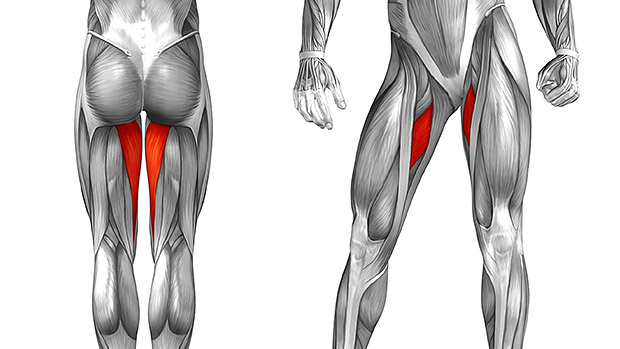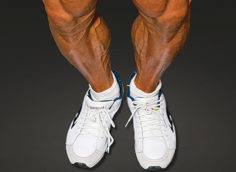Much has been written about hip abduction exercises like pushing your knees out against a band loop while you hip thrust or squat, lateral band walks, etc. And yes, they should be a weekly component of comprehensive lower-body program.
But research on professional hockey players found that they were 17 times more likely to sustain an adductor muscle strain (groin injury) if their adductor strength (muscles that move the leg toward the body's midline) was less than 80% of their abductor strength (muscles that move the leg away from the body's midline). (1)
Now, although that specific strength ratio is based on one study, a 2015 systematic review found that hip adductor strength was one of the most common risk factors for groin injury in sport. (2)
In other words, an emphasis on hip abduction exercises that's not complemented with performing hip adduction exercises may put you at an increased risk of injury.
This is one reason why the programs I design include at least one of the following exercises each week: seated hip adduction machine, standing hip adduction, side lying hip adduction, and the Copenhagen hip adduction exercise. (Since most are familiar with how to do the adduction machine, I've omitted it in the tutorial videos.)
The Copenhagen hip adduction exercise has been shown to be a very effective movement (3,4) and it's one of my favorite exercises for targeting the hip adductors, along with the additional shoulder and torso musculature demands. Here's how I perform the Copenhagen hip adduction exercise, which is a bit different than how it's commonly done.
Some trainers may want to argue that compound and single-leg exercises like wide-stance squats, lunges, and single-leg squats train the adductors effectively enough to offset the need for doing additional adductor isolation exercises. However, the highest EMG values for the wide-stance squat (5), along with those found during a single-leg squat and a lunge, are relatively low compared to exercises that focus primarily on the hip adduction movement (6). So, with respect to reaching greater levels of muscle activity in the adductors, isolation exercises are superior to squats and lunges.
Additionally, it's important to see how the scientific evidence falls in line with the principle of specificity. Research demonstrates that strength gains are highly specific to the part of the movement one trains in, with limited transfer to the rest of the untrained ranges of the movement that may not be addressed in a given exercise (7,8).
With this in mind, exercises developed to train the hip adductors directly – such as standing hip adductions with a band or cable, the Copenhagen hip adduction exercise, and the hip adductor machine – involve moving through larger ranges of motion of hip adduction than exercises like squats, single-leg squats, and lunges.
Therefore, when training the adductor musculature, it makes sense to also add such exercises into a program to train in ranges of motions that may not be sufficiently addressed by more compound exercises. (9)
- Tyler TF et al. The association of hip strength and flexibility with the incidence of adductor muscle strains in professional ice hockey players. Am J Sports Med. Mar-Apr 2001;29(2):124-8. PubMed.
- Whittaker JL et al. Risk factors for groin injury in sport: an updated systematic review. Br J Sports Med. 2015 Jun;49(12):803-9. PubMed.
- Serner A et al. EMG evaluation of hip adduction exercises for soccer players: implications for exercise selection in prevention and treatment of groin injuries. Br J Sports Med. 2014 Jul;48(14):1108-14. PubMed.
- Ishøi L et al. Large eccentric strength increase using the Copenhagen Adduction exercise in football: A randomized controlled trial. cand J Med Sci Sports. 2016 Nov;26(11):1334-1342. PubMed.
- Clark DR et al. Muscle activation in the loaded free barbell squat: a brief review. J Strength Cond Res. 2012 Apr;26(4):1169-78. PubMed.
- Dwyer MK et al. Comparison of lower extremity kinematics and hip muscle activation during rehabilitation tasks between sexes. J Athl Train. 2010 Mar-Apr;45:181-90. PMC.
- Graves JE et al. Specificity of limited range of motion variable resistance training. Med Sci Sports Exerc. 1989 Feb;21(1):84-9. PubMed.
- McMahon GE et al. Impact of range of motion during ecologically valid resistance training protocols on muscle size, subcutaneous fat, and strength. J Strength Cond Res. 2014 Jan;28(1):245-55. PubMed.
- Vigotsky V et al. Are the Seated Leg Extension, Leg Curl, and Adduction Machine Exercises Non-Functional or Risky? NSCA Personal Training Quarterly. 2017 Jun;4(4):50-53.




